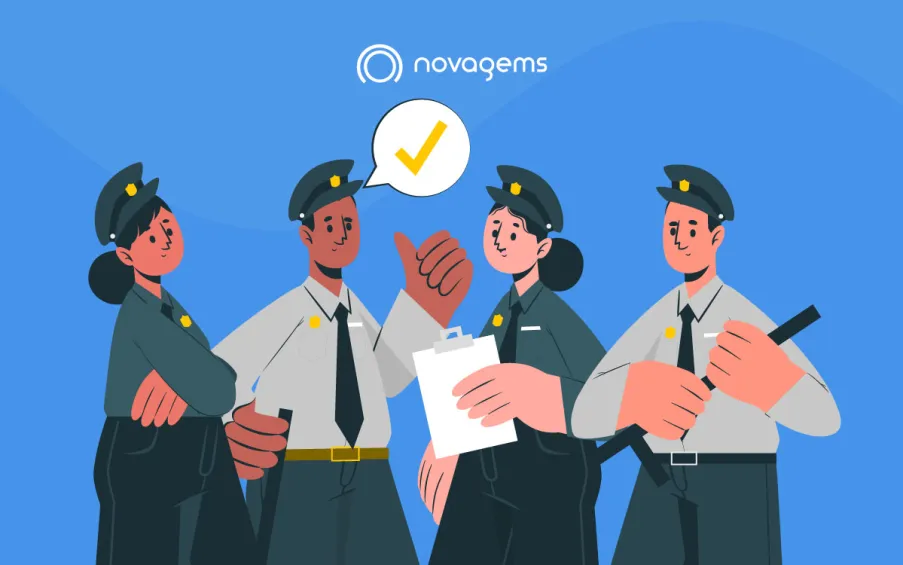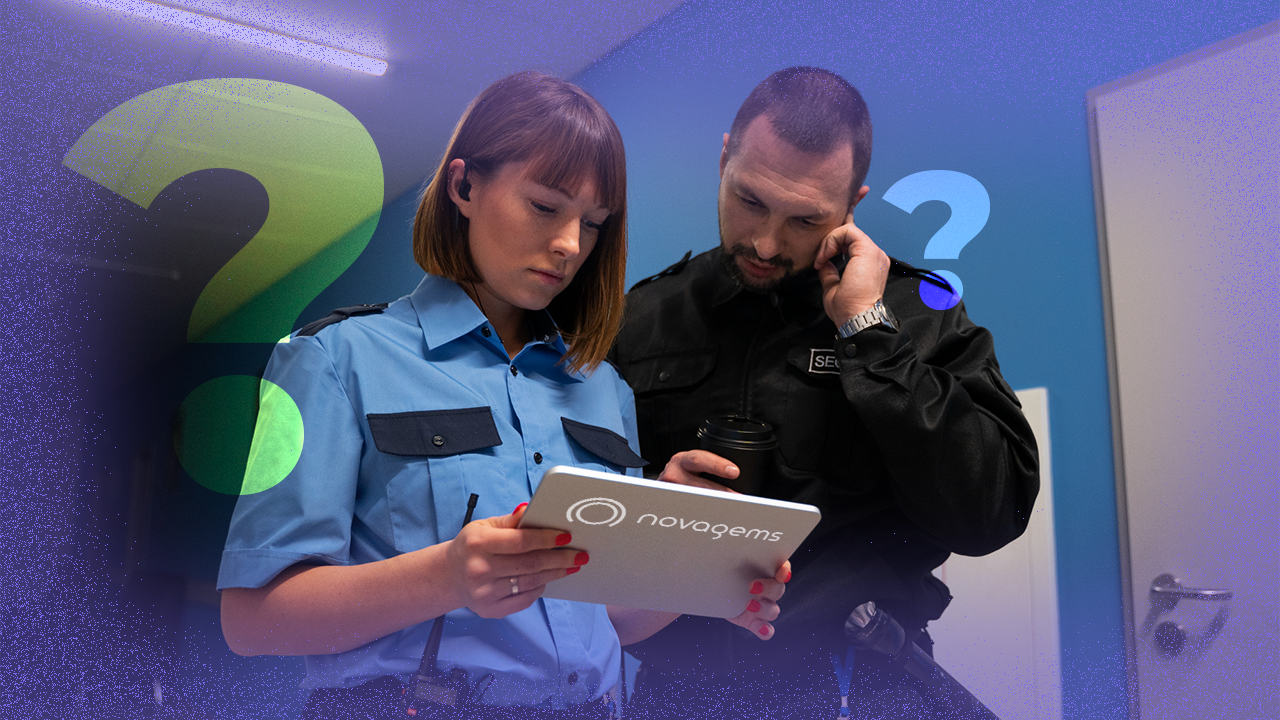Basic Requirements in Security Guard Training
Wed, Oct 2, 2024
Read in 6 minutes

If you wish to become a security guard having basic security guard training is a must. They need to have some basic knowledge before they dive into the world of security. If you are an owner of a security guard company it is important that your security guards are well trained. This will not only keep your clients safe. But it will label you as a good security guard company and you can close more security contracts.
Becoming a security guard involves more than just wearing a uniform and monitoring the premises. It requires proper training to ensure safety, legal compliance, and effective responses to different situations. For those interested in joining the security industry or starting their own security business, understanding the training process is essential.
Here is your guide to effective security training that covers the types of security guard training, the steps to becoming a security guard. And the critical components of a quality training program.
Types of Security Guard Training
Security guards can take on various roles depending on the level of security needed and the nature of the assignment. Here are the different types of security guard training:
Unarmed Security Guard Training
This is the most common type of security training and covers basic protection skills without the use of weapons. It focuses on areas like surveillance, communication, reporting, and emergency response. Unarmed security guards are often employed at shopping centers, office buildings, residential areas, and events.
Armed Security Guard Training
For those providing armed protection services, this type of training is necessary. It includes all aspects of unarmed training, plus additional sessions on firearm handling, safety, and legal use of force. Armed security guards are commonly employed in higher-risk situations like banks, government buildings, or events requiring extra protection.
Specialized Security Guard Training
Some security guards may require specialized training depending on their roles. This includes:
- Private Investigators: Training in surveillance, data gathering, and conducting investigations.
- Bodyguards/Executive Protection: Training in personal defense, escorting high-profile individuals, and quick emergency responses.
- Cybersecurity Officers: Training on protecting digital assets, securing information, and preventing cyberattacks.
Different states and regions may have additional requirements. So it’s important to research and ensure you meet the specific training standards for the security role you intend to take on. Also you might even find that there are different levels of security guard training in many areas.
There might be different security training programs to become an entry level security guard. But to become a trained security professional, you might need a different course. So it is always advisable to be well prepared and researched.
Steps to Become a Security Guard
Becoming a licensed security guard involves a few crucial steps. Here’s a general guide:
Meet Age and Educational Requirements
Most states require security guards to be at least 18 years old (or 21 for armed positions). A high school diploma or equivalent is typically required, although some roles may demand further education. This is one of the basic requirements you need to meet before you think about requirements in security guard training.
Pass a Background Check
Due to the nature of the role, most security guard applicants must pass a criminal background check. A clean record is usually necessary to proceed with the licensing process, although some minor offenses may not be disqualifying.
Complete Security Guard Training
The most important step is completing a state-approved training course. The duration and content of the training depend on the type of security guard position you’re pursuing and the state regulations. For example, unarmed security guard training typically lasts 8-16 hours, while armed guards require additional firearm safety training.
Apply for a Security Guard License or Permit
After completing training, you’ll need to apply for a license. Each state has its own licensing authority, such as the Department of Public Safety or the Board of Private Security. The licensing process may involve an application fee, fingerprinting, and providing proof of training.
Secure Employment
Many security companies prefer to hire individuals who already have their license or permit, although some may assist with training and the application process. Once hired, you’ll be expected to continue following security procedures and may require additional on-the-job training.
Remember, armed security guards will need to secure a separate weapons permit. And in many states, this means passing a firearm safety and handling course.
What to Include in Security Guard Training
A well-rounded security guard training program covers a variety of topics to prepare individuals for the responsibilities of the role. Before you start searching how to train your security guard” you need to understand some key terms yourself. Key components typically include:
Understanding Legal Responsibilities and Regulations
Security guards need to know their rights, duties, and limitations. Training programs focus on state-specific regulations, legal use of force, arrest procedures, and working within the law to avoid liability issues.
Security Protocols and Emergency Procedures
Security guards must be trained on how to respond to different emergencies, such as fire alarms, medical crises, or security breaches. This includes learning evacuation procedures, first aid, and basic crisis management skills.
Surveillance Techniques and Monitoring Skills
Training on how to monitor surroundings effectively, identify suspicious behavior, and use surveillance systems like cameras or alarms is essential for security guards to maintain a safe environment.
Communication and Conflict Resolution
Good communication is vital for security guards. This includes communicating effectively with clients, team members, and law enforcement. Training should also cover conflict resolution techniques to defuse tense situations peacefully.
Report Writing and Documentation
Security guards are responsible for documenting incidents, and clear and accurate reports are important for legal and safety purposes. Training programs will cover how to write detailed and objective incident reports.
Physical Training and Defensive Tactics
Physical training helps prepare guards to handle physical confrontations, if necessary. This may include self-defense techniques, how to safely restrain individuals, and other physical security skills.
Customer Service Skills
Because security guards often interact with the public, customer service skills are part of most training programs. Guards learn how to remain calm, professional, and courteous even in difficult situations.
Firearms Training for Armed Guards
Armed security guards undergo additional training to learn how to use, maintain, and store firearms safely. This training also includes learning about the legal responsibilities of carrying a weapon and using force.
Conclusion
Security guard training is vital to ensure that individuals are fully prepared to handle the responsibilities of their roles. Whether you’re looking to work as an unarmed or armed guard, or in a specialized field, it’s important to understand the requirements in your state and complete all necessary training. By developing a range of skills, you can become an effective and professional security guard who helps protect people and property.
Whether you’re starting out in the security industry or enhancing your current skill set, make sure to choose a high-quality training program that covers all the essential areas for your career.
Get a Free Trial
Sign up For Newsletter
Latest Blog Posts
Get Started
Start being productive & grow your business
with Novagems




